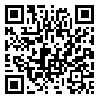Mon, Jan 13, 2025
[Archive]
Volume 8, Issue 3 (5-2018)
Iran J Ped Hematol Oncol 2018, 8(3): 172-179 |
Back to browse issues page
Download citation:
BibTeX | RIS | EndNote | Medlars | ProCite | Reference Manager | RefWorks
Send citation to:



BibTeX | RIS | EndNote | Medlars | ProCite | Reference Manager | RefWorks
Send citation to:
TEREMMAHI ARDESTANI M, chahardouli B, Mohammadi S, Nikbakht M, toosi B, zaker F, et al . Detection of R882 Mutations in DNMT3A Gene in Acute Myeloid Leukemia: A Method Comparison Study. Iran J Ped Hematol Oncol 2018; 8 (3) :172-179
URL: http://ijpho.ssu.ac.ir/article-1-367-en.html
URL: http://ijpho.ssu.ac.ir/article-1-367-en.html
MAJID TEREMMAHI ARDESTANI 
 , Bahram Chahardouli
, Bahram Chahardouli 
 , Saeed Mohammadi
, Saeed Mohammadi 
 , Mohsen Nikbakht
, Mohsen Nikbakht 
 , Bahareh Toosi
, Bahareh Toosi 
 , Farhad Zaker
, Farhad Zaker 
 , Shahrbano Rostami *
, Shahrbano Rostami * 
 , Ahmad Kazemi
, Ahmad Kazemi 


 , Bahram Chahardouli
, Bahram Chahardouli 
 , Saeed Mohammadi
, Saeed Mohammadi 
 , Mohsen Nikbakht
, Mohsen Nikbakht 
 , Bahareh Toosi
, Bahareh Toosi 
 , Farhad Zaker
, Farhad Zaker 
 , Shahrbano Rostami *
, Shahrbano Rostami * 
 , Ahmad Kazemi
, Ahmad Kazemi 

Cell Therapy and Hematopoietic Stem Cell Transplantation Research Center
Abstract: (3226 Views)
Background: Somatic mutations in the hotspot region of the DNA-methyltransferase 3A (DNMT3A) gene were recurrently identified in acute myeloid leukemia (AML). It is believed that DNMT3A mutations confer an adverse prognosis for AML patients. These lines of evidence support the need for a rapid and cost-efficient method for the detection of these mutations. The present study aimed to establish high resolution melting (HRM) curve analysis as a rapid and sensitive test to identify DNMT3A gene mutations in AML patients.
Materials and Methods: In this retrospective cohort study, a total of 220 AML patients who referred to hematology-oncology and stem cell transplantation centers (referral center) at Shariati hospital in Tehran, Iran, were included. AML-M3 and therapy-related AML patients were excluded. The HRM assay was used to identify R882 mutations in DNMT3A gene, and the results were compared with those of Sanger sequencing as the gold standard test for detection of such mutations.
Results: Among 220 samples from AML patients, Sanger sequencing detected 25 (11.4%) patients as having DNMT3A R882 mutations. HRM assay detected mutations in 23 (92%) samples and reported two false-negative results that were related to poor-quality DNA samples. There was an overall good agreement between direct sequencing and HRM assay (kappa value of 0.95) (p<0.001). Sensitivity assay showed that the analytical detection limits for HRM were 10% for the detection of R882H mutation compared with Sanger sequencing at 25%. Both Sanger sequencing and HRM assay reported no false-positive results.
Conclusion: HRM curve analysis can be considered as a sensitive, fast, and high-throughput method for the detection of DNMT3A R882 mutation in AML patients. These results validate HRM analysis as an alternative method to Sanger sequencing because of its simplicity along with the lower cost and less required time.
Materials and Methods: In this retrospective cohort study, a total of 220 AML patients who referred to hematology-oncology and stem cell transplantation centers (referral center) at Shariati hospital in Tehran, Iran, were included. AML-M3 and therapy-related AML patients were excluded. The HRM assay was used to identify R882 mutations in DNMT3A gene, and the results were compared with those of Sanger sequencing as the gold standard test for detection of such mutations.
Results: Among 220 samples from AML patients, Sanger sequencing detected 25 (11.4%) patients as having DNMT3A R882 mutations. HRM assay detected mutations in 23 (92%) samples and reported two false-negative results that were related to poor-quality DNA samples. There was an overall good agreement between direct sequencing and HRM assay (kappa value of 0.95) (p<0.001). Sensitivity assay showed that the analytical detection limits for HRM were 10% for the detection of R882H mutation compared with Sanger sequencing at 25%. Both Sanger sequencing and HRM assay reported no false-positive results.
Conclusion: HRM curve analysis can be considered as a sensitive, fast, and high-throughput method for the detection of DNMT3A R882 mutation in AML patients. These results validate HRM analysis as an alternative method to Sanger sequencing because of its simplicity along with the lower cost and less required time.
Type of Study: Research |
Subject:
Heart
Received: 2018/01/14 | Accepted: 2018/05/31 | Published: 2018/05/31
Received: 2018/01/14 | Accepted: 2018/05/31 | Published: 2018/05/31
Send email to the article author
| Rights and permissions | |
 |
This work is licensed under a Creative Commons Attribution-NonCommercial 4.0 International License. |

